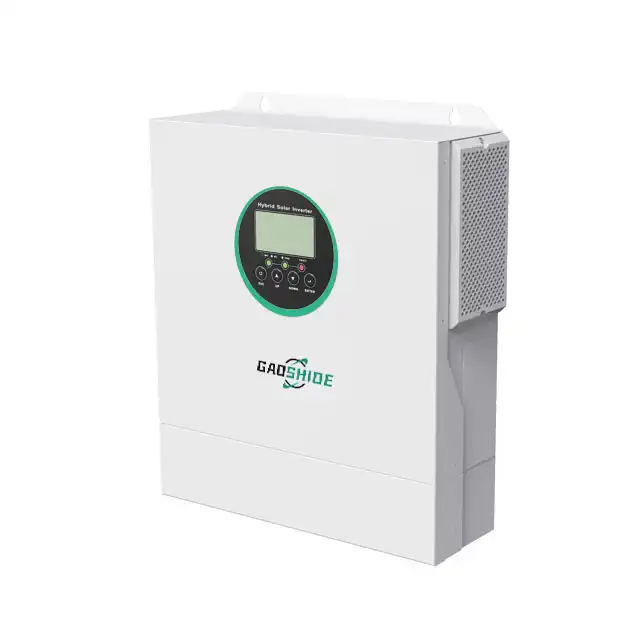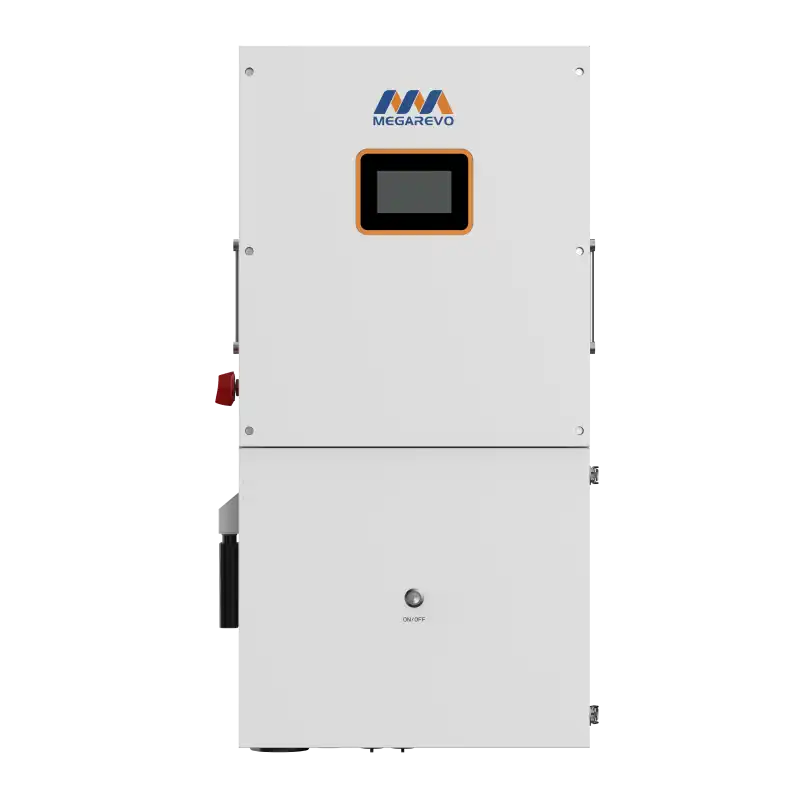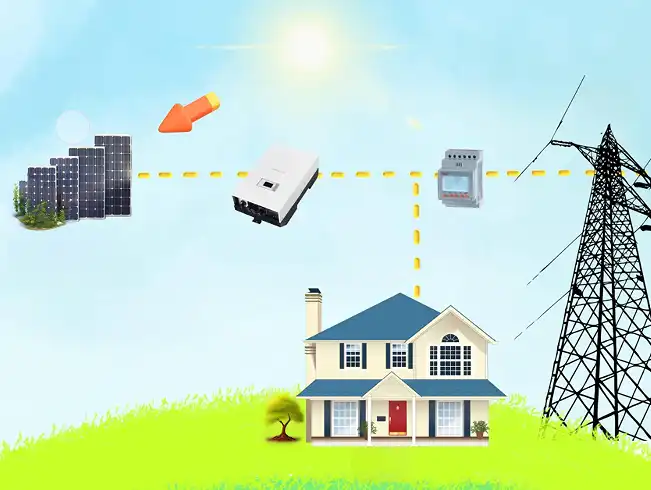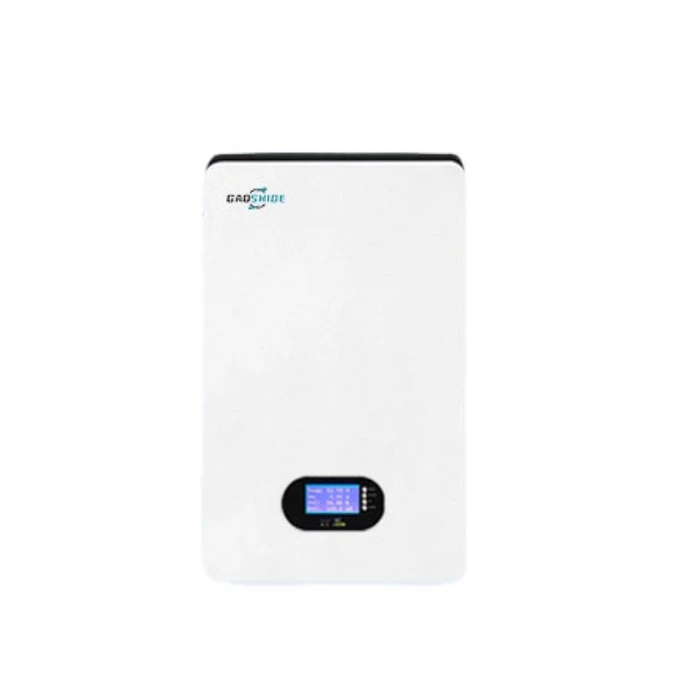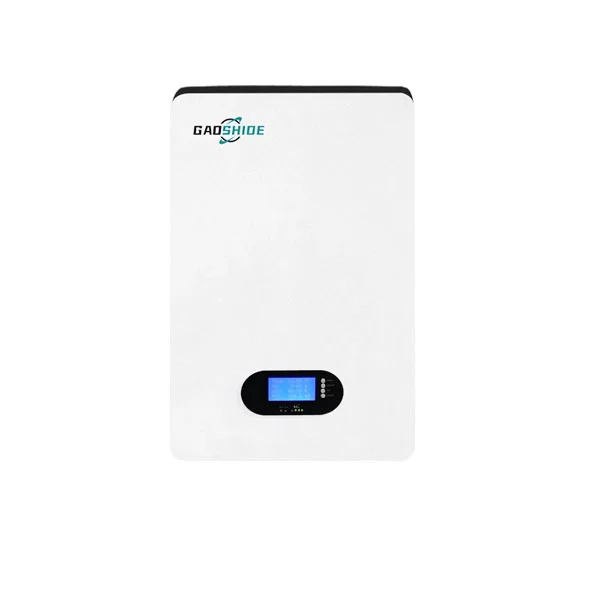- English
- Search
- English
Energy storage battery fever is changing the U.S. electricity mix
According to the Financial Times, US developers are deploying batteries at a record pace, improving the utilization of renewable energy generation and changing the structure of US generators.
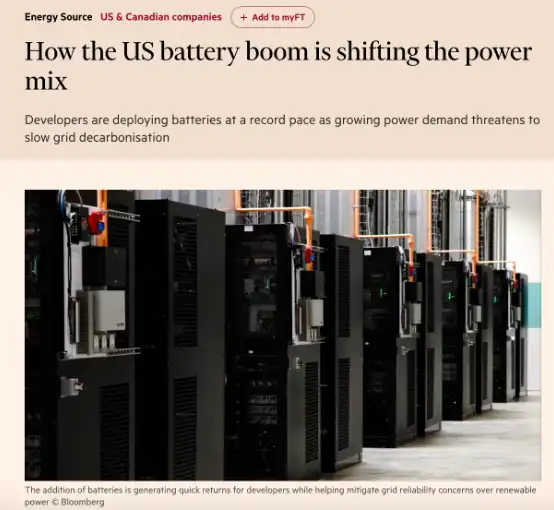
Last Tuesday, batteries pumped 2 gigawatts worth of power into the Texas grid, the third-highest battery storage output on record, to meet peak electricity demand at night. In California, battery storage typically provides one-fifth of power at night, according to GridStatus.io. According to the U.S. Energy Information Administration, these two states are leading the construction of battery storage capacity in the United States, which is expected to nearly double this year to about 30 gigawatts.
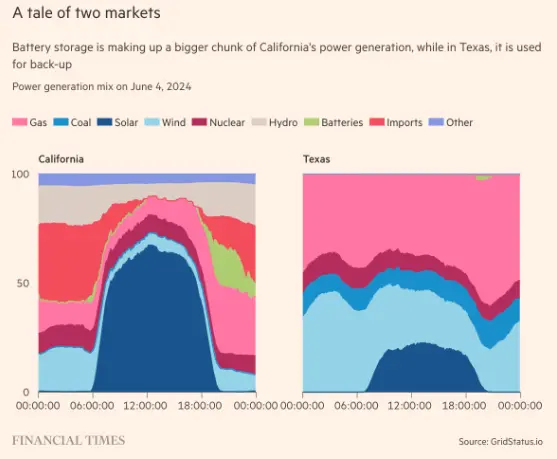
The landmark Inflation Reduction Act extends tax credits to battery developers for the first time to help meet the US goal of 100% carbon-free electricity by 2035. The addition of batteries brings a quick payback to developers while helping to ease concerns about the reliability of the grid from renewable energy. Batteries can play an important role in meeting the surging power demand of data centers used for the internet and artificial intelligence. Large technology groups such as Microsoft and Google have pledged to use carbon-free energy for electricity consumption by 2030, a goal that will be difficult to achieve without battery storage.
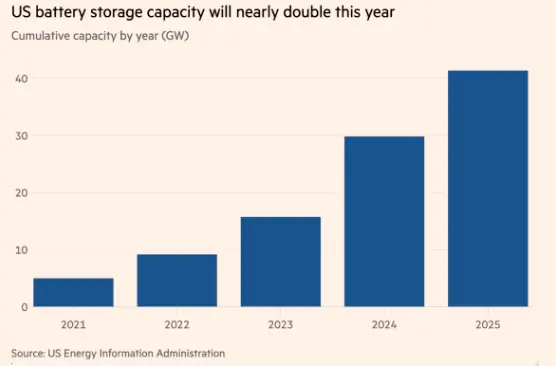
But analysts say fossil fuels will meet growing electricity demand until battery storage systems are available on a larger scale. Obstacles facing the battery storage industry include years of waiting times for grid connections and regulatory uncertainty. Last month, the Biden administration more than tripled Section 301 tariffs on battery imports from China to 25% starting in 2026. Developers say the move will increase battery prices due to the lack of a domestic supply chain.
The United States is increasing its production of solar panels. A new report from the Solar Energy Industries Association and Wood Mackenzie found that the United States added a record 11 gigawatts of solar panel manufacturing capacity in the first quarter. The United States now has more than 26 gigawatts of photovoltaic panel production capacity, more than three times the capacity expected by the end of 2022. The milestone comes at a critical time for American solar, which is the fastest-growing source of new power generation on the grid. Despite growth in domestic manufacturing, U.S. imports of panels remain at record levels, and some manufacturers have called for greater trade protections to shield the industry from a flood of cheap imports, as Chinese companies have big investments in Southeast Asia, where much of the U.S. supply comes.
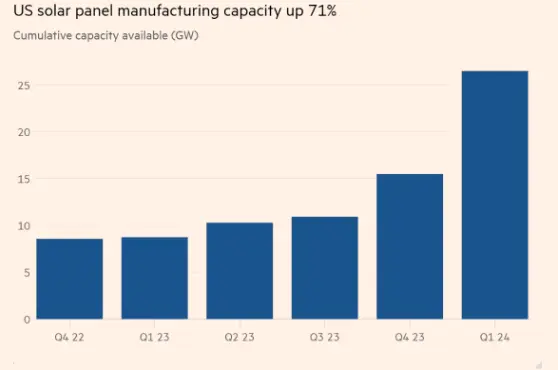
The U.S. International Trade Commission will decide whether to investigate a petition filed by solar manufacturing giants including First Solar and Qcells, which calls for additional tariffs on imports of solar photovoltaic products from Southeast Asia. But clean energy groups such as the U.S. Clean Energy Association believe that such a move could slow down the United States' decarbonization process.
YOU MAY LIKE


